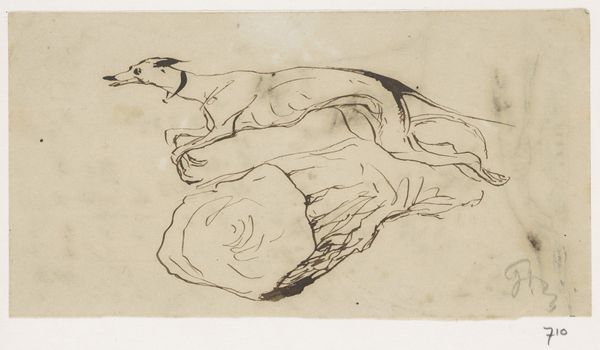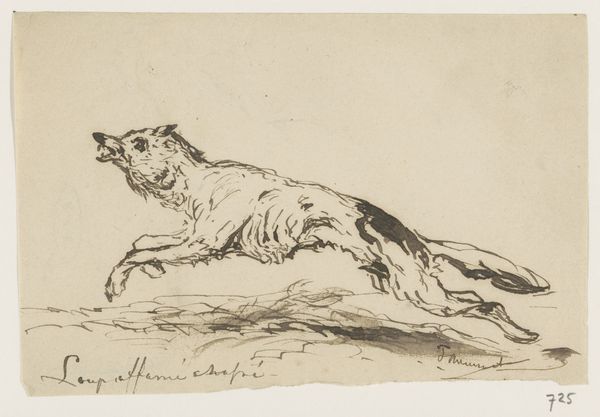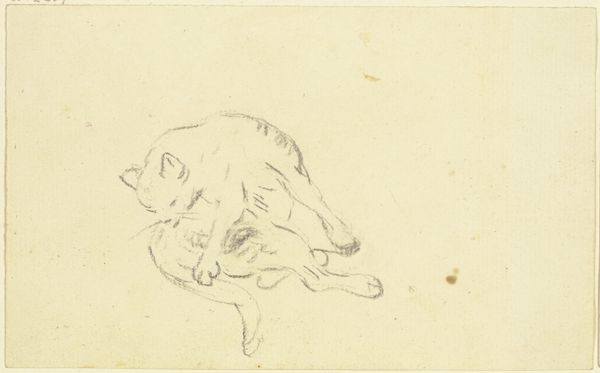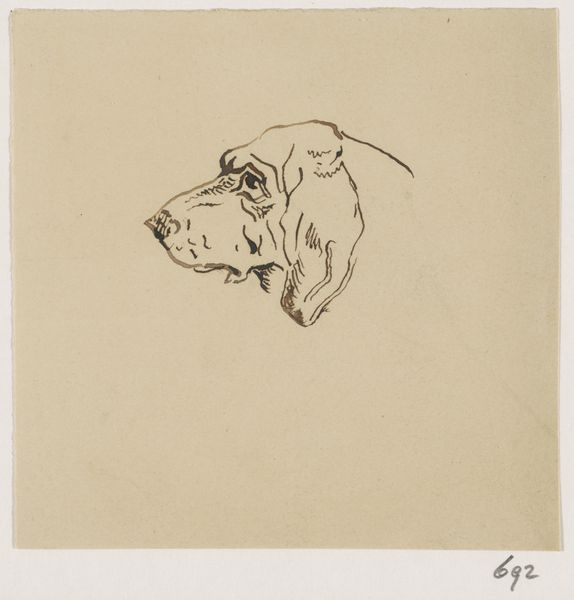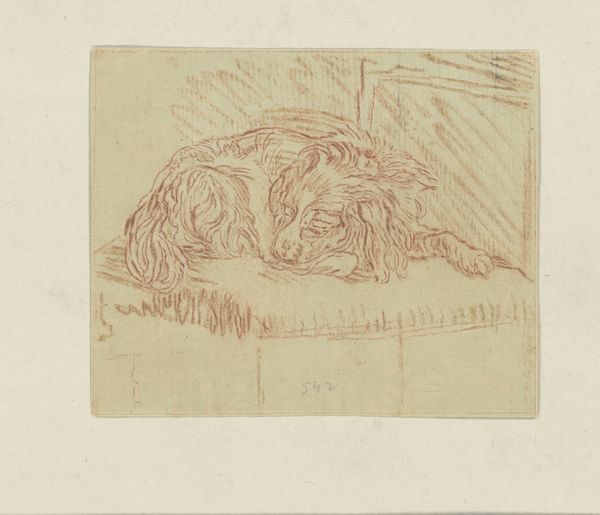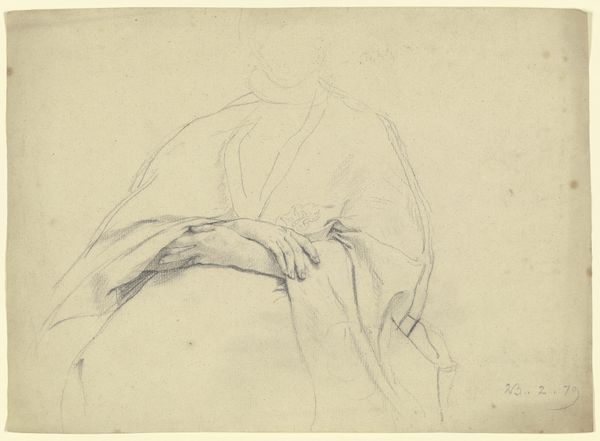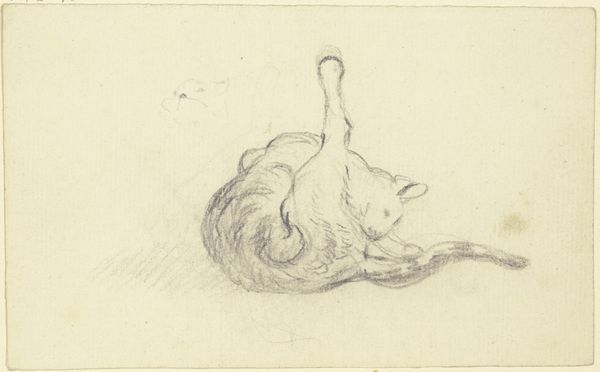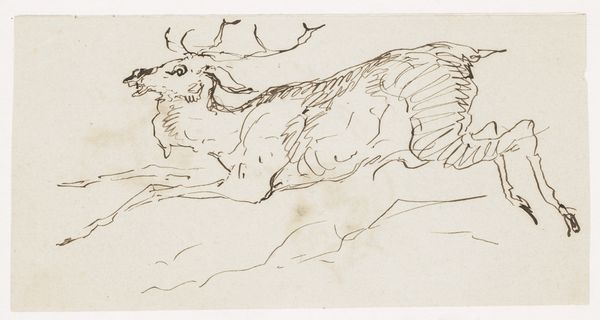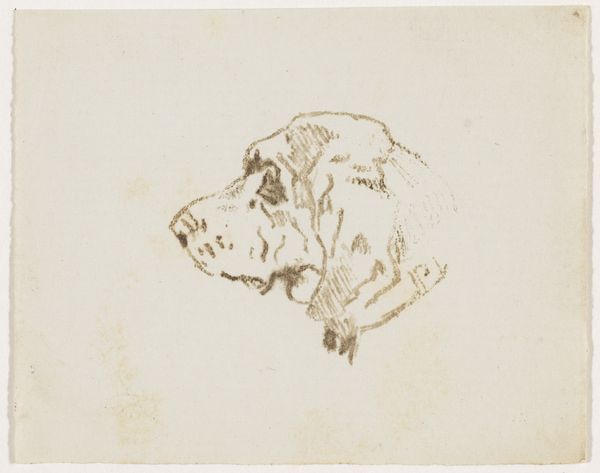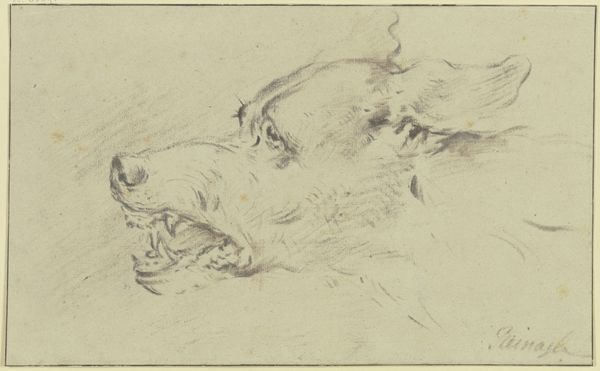
drawing, etching
#
portrait
#
drawing
#
animal
#
etching
#
dog
#
etching
#
pencil drawing
#
realism
Dimensions: height 66 mm, width 108 mm
Copyright: Rijks Museum: Open Domain
Curator: Standing before us is "Afghaanse windhond," an etching by Willem Adrianus Grondhout, created sometime between 1888 and 1934. It resides here at the Rijksmuseum. Editor: Immediately, I'm struck by the simplicity. The monochromatic tones and the visible marks of the etching process create a very raw and intimate feeling. It's like we're peering into the artist's sketchbook. Curator: And a window into a specific social context as well. The Afghan Hound, then and now, speaks to leisure and affluence. Dog breeding as a hobby connects to evolving class structures and ideas of pet ownership in late 19th and early 20th century Europe. Editor: I see that, definitely. The meticulous rendering of the dog's luxurious coat also points towards value and craft. You can almost feel the texture; the materiality is very present, even in an etching. What kind of inks or tools might he have used to achieve that fineness of line? Curator: The choice of etching as a medium, accessible to a wider range of artists compared to, say, oil painting, suggests Grondhout sought to participate in a growing print culture, making art accessible to a broader public beyond elite circles. Prints circulated as autonomous works, sometimes in illustrated newspapers. Editor: So it wasn't just the depiction of an aristocratic dog but also the means of its distribution that spoke to shifts in social power? The original etching would have taken a lot of labor. And who decided to print and distribute it? Curator: Precisely. The politics of the image are inextricably tied to its production and dissemination. It's interesting to consider this piece not merely as a portrait but as a cultural artifact reflecting these dynamic forces. Editor: Looking at this piece now, I appreciate how it brings together a refined technique and this subtle class commentary. The textures, the visible labour involved in the print, give the work so much more than just representing the breed. Curator: Yes, a seemingly simple image of a dog allows us to consider how artistic choices intersect with broader historical narratives, questioning established norms about art and its role in society. Editor: A reminder that every line has a history, both materially and socially.
Comments
No comments
Be the first to comment and join the conversation on the ultimate creative platform.

